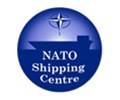“BILLS
OF LADING: POSSESSION, TITLE & OWNERSHIP”
The word possession
in relation to cargo and BL’s could mean to hold-with or without ownership. In other
words, BL possession falls to the party holding them at the particular time or the
custodian at time of dispute or discussion. This person might be the cargo
owner or another party in the supply chain.
The nature of international trade provides a tendency for BL’s falling in several hands. For instance, the BL’s may be in custody of the cargo supplier who maintains possession in lieu of pending payments or for other reasons before dispatching them to actual cargo owner.
Freighting
agents, shipping agents, customs brokers and forwarders at some point are
likely to be in possession of the BL’s to execute the various roles assigned to
them. Banks in L/C payments also get to posses the BL’s as they move through
documentary credit processes.
Being in possession of BL’s does not give one ‘title’ to the goods unless they are
the rightful holder of the BL’s through the necessary provisions such: being
the named consignee, through endorsements or through legal provisions such as
the rule of law.
In fact there are known occasions where BL’s in
possession of wrong hands dubious means such as lost & found and through
fraudulent activities
There various ways through which one may gain title
to the goods. The most common way is where the title lies to the actual
consignee as named on the bills of lading (straight BL’s).
Banks may also gain title to the goods through L/C
financing in the event that the consignee is unable to repay the bank money
paid out on his behalf as per the L/C terms and conditions.
A trader in international trade may gain title to
the goods in the event good are sold and BL’s endorsed in his favor (to order
BL’s).
Shipping lines and shipping agents have lien in
respect to unpaid freight. The lien may give them title to the goods in the
event the freight charges remain unsettled and the owner fails to pay the same
within the stipulated period as evidenced by the BL. Other interested parties may also petition
through the courts of law and with enough reason and be awarded title to the
goods. Example could be trader owed money by consignee and who may want to
recover their amounts through applying for title and ownership to the goods.
The party holding title to the goods is deemed to be
the owner of such goods. Actual cargo ownership
is obtained by applying for the goods from the person or company holding them
on behalf of the carrier. This might be a ship owner, a shipping agent or a
port/ terminal authority on appointed by the carrier.
The shipping practice across the world entails one
original bill of lading being presented to carrier in exchange of cargo. Upon
receipt of the cargo, the consignee gets actual cargo possession and ownership of the goods. During this
stage, the bill of lading has served its purpose and is referred to as “an
accomplished BL” or “an exhausted BL” and it serves no more important function
other than a reference document to both the carrier and the consignee.
Any contribution or comments> petermainamics@gmail.com
